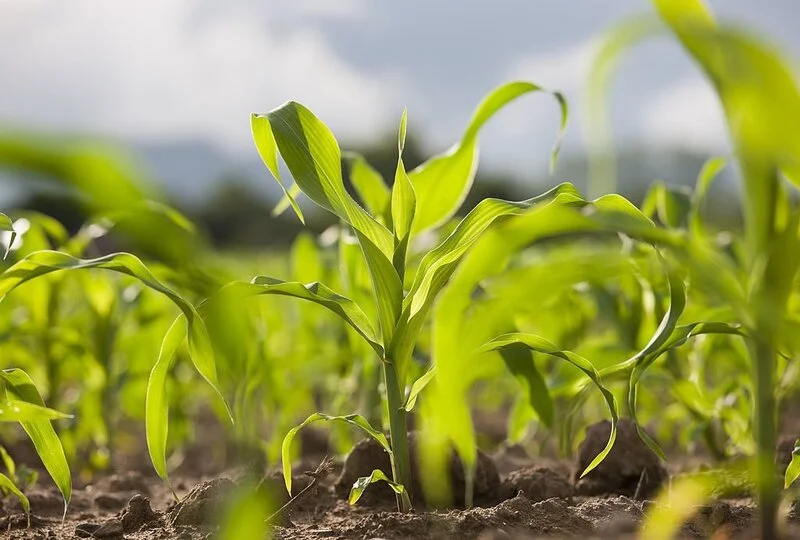It’s possible that you’ve grown corn before if you’re a gardener or hobby farmer. Nothing beats the satisfaction of pulling a bushel of your own luscious, juicy corn kernels straight from the stalk. But what if your yellowing leaves overpower your green thumb? Concern and confusion can result when maize plants begin to turn yellow. No need, though. Many gardeners have this problem, and we’ll explain why your plants are turning yellow.
Understanding Corn Plants
Large grain plant corn (or maize) has its origins in Mexico, around 10,000 years ago. This annual crop grows best in hot climates and is a member of the grass family. It only need enough of water, a nutrient-rich soil, and direct sunlight to thrive. The plant grows into a tall stalk with large leaves and yields ears of maize.
Planting maize seeds in late spring is the first step in the plant’s life cycle. Corn is normally ready for harvest in the early to middle of fall, after the plants have matured during the summer. When grown in ideal conditions, maize produces a lush green crop all over the plant. However, there are occasions when the corn plants you grow will start to turn yellow.
Common Causes of Yellowing in Corn Plants
Seeing yellow leaves on your corn plants can be a little disheartening, but it’s usually a sign that something is amiss. Let’s explore some of the common causes:
- Nutrient deficiencies: Corn plants need a good supply of nutrients, especially nitrogen, to maintain their green color. If your plants are turning yellow, it might be a sign of nitrogen or other nutrient deficiencies.
- Watering issues: Corn plants love water, but too much or too little can lead to yellowing. Overwatering can cause root rot, while underwatering can lead to dehydration.
- Pests and diseases: Certain pests like corn borers or diseases like corn smut can cause damage, leading to yellowing leaves.
- Environmental stress: Factors such as poor light, extreme temperatures, or incorrect soil pH can stress the plant, causing the leaves to turn yellow.
Recognizing these causes is the first step towards returning your corn plants to their lush, green glory. The key lies in careful observation and prompt action.
Diagnosing the Problem
If you notice any of your corn plants’ leaves turning yellow, it’s a warning sign that something is wrong. You’ll have to use your sleuthing skills to figure out what it is. Examine the ground conditions first. How wet or dry is it? Keep in mind that maize prefers somewhat damp but not soggy soil.
Next, check out the foliage’s hue. Do they have a striped pattern or are they solid yellow? A lack of nutrients may be to blame.
Take a look at how the plant is developing in general. Slow development and yellowing leaves may be an indication of a pest or disease problem. Think about the corn planting location as well. Is it getting too much or too little sunlight? Is it subjected to wildly fluctuating temperatures?
Solutions to Prevent and Treat Yellowing Corn Plants
The next step is to implement a solution after the issue has been recognized. If you suspect a watering problem, try shifting when you water. Keep the soil moist but not dripping wet by watering thoroughly.
In the event of nutritional insufficiency, a balanced fertilizer high in nitrogen should be used. Depending on the extent of an infestation or infection, either organic or chemical treatments can be utilized for pests and diseases.
If you’re growing corn in a less-than-ideal location, you might want to think about moving it. Corn does best in warm, sunny climates.
Conclusion
Growing your own corn can be a rewarding experience, but it can be derailed if the plants start to turn yellow. Your corn plants may not be as healthy as they once were, but with some detective work and tender loving care, they can recover. Keep in mind that each gardening challenge you overcome is a stepping stone toward mastery. Don’t be alarmed by the slight yellowing that has occurred. Consider it an opportunity to learn from your mistakes and grow as a grower. Enjoy your gardening!



